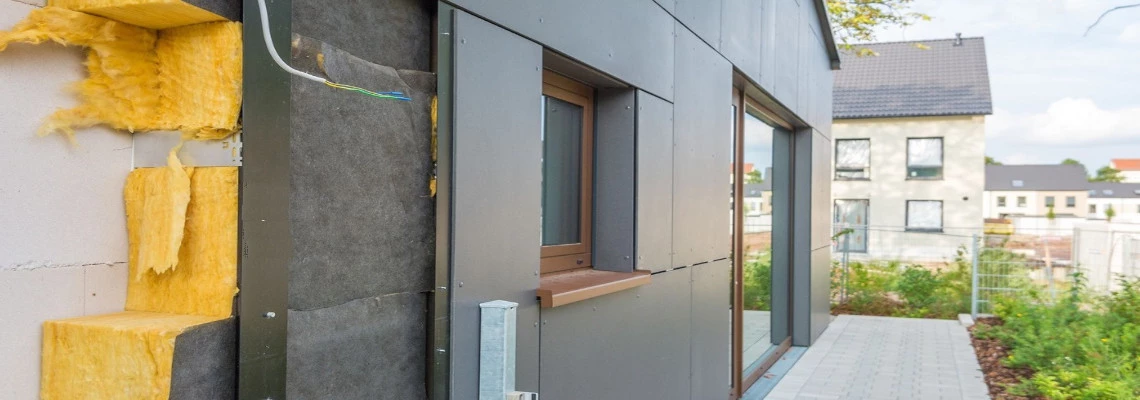
CAN TOO MUCH INSULATION CAUSE CONDENSATION?*
Insulation is an essential part of keeping our homes warm and energy-efficient. However, there are concerns about whether too much insulation can cause condensation problems. In this blog, we will explore this topic in more detail and answer some of the most common questions about insulation and condensation.
WHAT CAUSES CONDENSATION AND UNDER WHAT CIRCUMSTANCES?
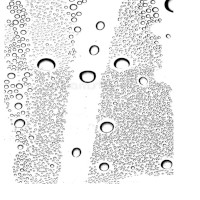 Condensation is a natural process that occurs when water vapor in the air transforms into liquid form. This phenomenon typically takes place when the air temperature drops, causing the moisture in the air to condense and form droplets on surfaces such as windows.
Condensation is a natural process that occurs when water vapor in the air transforms into liquid form. This phenomenon typically takes place when the air temperature drops, causing the moisture in the air to condense and form droplets on surfaces such as windows.
The primary cause of condensation is the difference in temperature between the air and surfaces in contact with it. When the surface is cooler than the surrounding air, water vapor present in the air comes into contact with the surface and loses its heat, causing it to condense into liquid form.
Condensation can also occur in high humidity environments, where the air contains a large amount of moisture. In such cases, when the temperature of the air drops, it becomes saturated with moisture, leading to the formation of droplets.
Condensation can have various effects, both beneficial and detrimental. It is crucial in the water cycle, which is responsible for the distribution of water on Earth. However, it can also lead to issues such as mold growth, corrosion, and damage to buildings and infrastructure.
Understanding the circumstances under which condensation occurs is important for various industries such as construction, transportation, and agriculture, where it can affect operations and infrastructure. By understanding the causes and effects of condensation, measures can be taken to minimize its negative impact and optimize its benefits.
DOES INSULATION MAKE CONDENSATION WORSE?
 When it comes to insulation and condensation, there are different factors to consider. In some cases, insulation can actually help reduce condensation, while in others it may make the problem worse.
When it comes to insulation and condensation, there are different factors to consider. In some cases, insulation can actually help reduce condensation, while in others it may make the problem worse.
Insulation works by slowing down the transfer of heat between the inside and outside of a building. This can help keep the interior of the building warmer in cold weather and cooler in hot weather. In some cases, insulation can also help prevent moisture from entering the building in the form of condensation.
However, if insulation is not installed properly, it can create areas where moisture can accumulate and lead to condensation. For example, if insulation is installed too close to a roof or wall, it can create a cold surface that attracts moisture and leads to condensation. Additionally, if insulation is not installed with a proper vapour barrier, moisture can penetrate the insulation and cause condensation to occur.
So, the answer to whether insulation makes condensation worse depends on the specific circumstances. Properly installed insulation with a vapor barrier can help prevent condensation, while poorly installed insulation can make the problem worse.
CAN TOO MUCH LOFT INSULATION CAUSE DAMP?
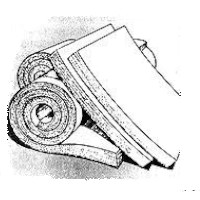 Yes, too much loft insulation can cause dampness in some situations. Loft insulation works by trapping warm air inside a building, preventing it from escaping through the roof. This helps to keep the interior of the building warmer in cold weather, reducing the need for heating and saving energy. However, if loft insulation is installed incorrectly or in excessive amounts, it can create problems with dampness.
Yes, too much loft insulation can cause dampness in some situations. Loft insulation works by trapping warm air inside a building, preventing it from escaping through the roof. This helps to keep the interior of the building warmer in cold weather, reducing the need for heating and saving energy. However, if loft insulation is installed incorrectly or in excessive amounts, it can create problems with dampness.
One way that excessive loft insulation can cause dampness is by blocking ventilation. Proper ventilation is necessary to allow moisture to escape from the building. If insulation is installed too thickly or packed too tightly into the loft, it can block air flow and prevent moisture from escaping. This can lead to condensation and dampness, particularly in areas where moisture tends to accumulate, such as bathrooms, kitchens, and laundry rooms.
Another way that excessive loft insulation can cause dampness is by trapping moisture within the insulation itself. If moisture enters the insulation, such as through a leak in the roof or condensation from inside the building, it can become trapped and lead to mould and mildew growth. This can also create an unpleasant musty odour and potentially lead to health problems.
To avoid these issues, it's important to install loft insulation correctly and at the right thickness for the specific type of insulation being used. It's also important to ensure that proper ventilation is maintained, particularly in areas where moisture tends to accumulate. Regular inspection and maintenance of the roof and insulation can help prevent dampness and other problems from occurring.
WHAT HAPPENS IF YOU HAVE TOO MUCH INSULATION?
If you have too much insulation, then it can lead to a range of problems. As we've already mentioned, too much insulation can trap moisture inside the building, leading to damp and condensation problems. It can also make it more difficult to regulate the temperature inside the building, leading to uncomfortable living conditions. Additionally, too much insulation can put pressure on the building structure and cause damage over time.
Here are some potential consequences of having too much insulation:
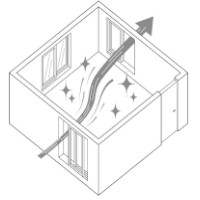 1. Reduced ventilation
1. Reduced ventilation
Reduced ventilation occurs when there is insufficient airflow or air exchange within a building or space. One common cause of reduced ventilation is improper insulation. If insulation is installed too thick, it can block ventilation and trap moisture, leading to a host of issues such as reduced air quality and the growth of mold.
When insulation is installed too thickly, it can prevent air from circulating freely within the building. This can create stagnant areas where moisture can build up, leading to mold growth and the proliferation of other harmful substances. Poor indoor air quality resulting from reduced ventilation can also cause respiratory problems, allergies, and other health issues.
It's important to ensure that insulation is installed properly to prevent reduced ventilation. This may involve using the appropriate type and amount of insulation for the specific building, ensuring that proper ventilation systems are in place, and regularly checking for any signs of mold or moisture buildup.
.
 2. Increased heat
2. Increased heat
Insulation traps heat inside a building, and too much insulation can cause overheating in warmer weather.
This can make the interior of the building uncomfortable and may increase the need for air conditioning, leading to higher energy costs.
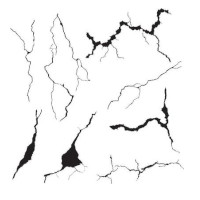 3. Structural damage
3. Structural damage
When insulation is installed excessively, it can cause structural damage to the building over time. This is because insulation is heavy, and it puts pressure on the walls and ceilings. Over time, this can cause the building structure to warp or crack, which can lead to serious structural problems.
For example, if insulation is installed too thickly in the attic, it can put pressure on the ceiling joists and cause them to warp or sag. This can result in cracks in the ceiling or walls, which can be unsightly and compromise the structural integrity of the building. Similarly, if insulation is installed too thickly in the walls, it can put pressure on the framing and cause it to warp or crack over time. This can lead to gaps in the walls, which can affect the insulation's effectiveness and compromise the building's overall insulation and energy efficiency.
Moreover, if the building structure is not strong enough to support the weight of the insulation, it can lead to serious safety hazards. For example, if the ceiling collapses due to excessive insulation, it can cause injury or even death to people inside the building.
Therefore, it's crucial to ensure that insulation is installed correctly and at the appropriate thickness for the specific type of insulation being used.
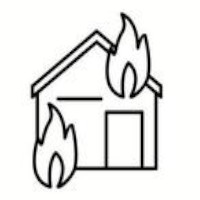 4. Fire hazard
4. Fire hazard
If insulation is packed too tightly or installed incorrectly, it can create a fire hazard. This is because it can prevent air from circulating and increase the risk of a fire starting and spreading.
If insulation is packed too tightly around the lights, it can prevent proper air circulation and increase the risk of the lights overheating and causing a fire.
Therefore, it's important to ensure that any lighting fixtures in the ceiling are installed correctly and have proper clearance from any surrounding insulation. Regular inspection and maintenance of lighting fixtures can also help prevent potential fire hazards.
 5. Increased cost
5. Increased cost
Installing too much insulation can be expensive and may not provide significant benefits in terms of energy efficiency. This can lead to wasted money and resources.
It's important to note that insulation only performs up to a certain thickness, beyond which there are diminishing returns in terms of energy efficiency. For example, in the case of loft insulation, a thickness of 270mm is typically recommended in the UK to achieve the optimal level of thermal performance. Adding more insulation beyond this thickness may not provide significant benefits in terms of energy efficiency, and can lead to wasted money and resources.
Similarly, for floor insulation, the optimal thickness will depend on various factors such as the type of insulation, the floor structure, and the climate in the region.
CAN YOU PUT TOO MUCH INSULATION IN THE LOFT?
Yes, it is possible to put too much insulation in a loft or attic. While loft insulation is an effective way to improve energy efficiency and reduce heating costs, over-insulating can lead to several potential issues.
Firstly, over-insulation can lead to poor ventilation in the attic, which can cause moisture buildup and increase the risk of mould growth. This can be particularly problematic if the insulation is installed over existing ventilation points, as it can block airflow and prevent moisture from escaping. Additionally, excessive insulation can cause the roof deck to become colder, leading to potential condensation problems and ultimately leading to dampness and mould growth.
Secondly, as mentioned earlier, over-insulating can put pressure on the ceiling joists, which can cause warping or sagging over time. This can lead to cracks in the ceiling and walls, which can affect the building's structural integrity.
Thirdly, too much insulation can cause the temperature in the attic to become too high in the summer months. This can lead to overheating, making it uncomfortable for people to enter the attic and causing potential damage to items stored there.
Finally, over-insulating a loft or attic can be expensive, as it requires more materials and labour to install. This can lead to wasted resources and increased costs.
CONDENSATION IN LOFT AFTER INSULATING
Condensation in the loft after insulating can occur due to a variety of factors, including inadequate ventilation, improper installation of insulation, and changes in temperature and humidity levels. Here are some potential causes and solutions:
Inadequate ventilation
When insulation is installed in a loft, it can block the flow of air, which can lead to condensation if there is insufficient ventilation. This can be particularly problematic if there is a lack of soffit vents, which are designed to allow air to flow into the loft from the outside.
Solution: Ensure that there is sufficient ventilation in the loft. This may involve installing additional vents or soffit vents to allow for better air circulation.
Improper installation of insulation
If insulation is installed incorrectly, it can create pockets where air is trapped, which can lead to condensation. This is particularly true if the insulation is not installed to the recommended thickness or if there are gaps or voids in the insulation.
Solution: Check to ensure that insulation is installed correctly and to the recommended thickness. If there are gaps or voids, these should be filled in to ensure that the insulation is continuous.
Changes in temperature and humidity levels
Condensation can also occur if there are significant changes in temperature and humidity levels in the loft. This can be particularly problematic in the winter when the temperature difference between the warm air in the house and the cold air outside can lead to condensation.
Solution: Monitor the temperature and humidity levels in the loft and adjust the ventilation and insulation accordingly. This may involve opening windows or using dehumidifiers to reduce humidity levels.
BEST INSULATION TO PREVENT CONDENSATION
When it comes to preventing condensation, choosing the right type of insulation is essential. While there are various types of insulation available, rock wool insulation is often considered the best option.
To clarify, rock wool insulation is often considered the best option for preventing condensation due to its vapour permeability. In addition to these properties, rock wool insulation also allows air to circulate freely, which helps to prevent moisture buildup and mould growth. This means that not only is rock wool insulation highly effective at reducing heat transfer, but it also "breathes" and helps to maintain a healthy indoor environment. So, if you want to ensure that your home is well-insulated and protected against condensation, rock wool insulation is definitely worth considering.
Overall, if you want to ensure that your home is well-insulated and protected against condensation, mineral wool insulation is definitely worth considering.
INSULATION THICKNESS TO PREVENT CONDENSATION
Inadequate insulation thickness can lead to heat loss and temperature differences, which can cause moisture buildup on cold surfaces. The amount of insulation needed to prevent condensation depends on various factors, including the climate, the type of insulation, and the construction of the building. As a general rule, the insulation thickness should be at least the recommended minimum for your region, but it's often beneficial to add more insulation than the minimum requirement. This can not only help prevent condensation but also improve the overall energy efficiency of your home. It's also worth noting that different areas of your home may require different insulation thicknesses. For example, the attic may require more insulation than the walls or floors.
In the UK, the recommended insulation thickness to prevent condensation varies depending on the location and type of construction. The recommended minimum thickness for loft insulation, for example, is typically around 270mm, which is sufficient to provide effective thermal insulation and prevent heat loss. For cavity wall insulation, the recommended thickness can range from 90mm to 150mm depending on the type of construction and insulation material used. Floor insulation typically requires a thickness of around 100mm to 150mm, depending on the type of insulation and the floor construction.
CONCLUSION
In conclusion, while insulation is a crucial element in improving energy efficiency and reducing heating costs in buildings, it's important to avoid over-insulating. Installing too much insulation can lead to poor ventilation, condensation problems, potential structural damage, overheating, and increased costs. It's essential to consult with a professional to determine the appropriate amount of insulation needed for your specific building and climate conditions, and to ensure proper ventilation and airflow in the area being insulated.
Related articles:
HOW TO PREVENT WINDOW CONDENSATION
THE TOP LOW-COST INSULATION CHOICES FOR YOUR HOME
HOW TO ESTIMATE HOW MUCH INSULATION YOU NEED
SHOULD I REMOVE 80 YEARS OLD INSULATION?
MINERAL WOOL INSULATION. THE UGLY TRUTH?
*All the information provided in the content published on Insulationgo blog is for informational and educational purposes only. Insulationgo LTD makes every effort to ensure the accuracy and timeliness of the content, but we do not assume any responsibility for any errors or omissions.
The information presented on this blog should not be considered as professional advice or a substitute for consulting relevant experts. Before making any purchase decisions or taking action based on the information presented here, it is strongly recommended to contact the product manufacturer directly to verify the details and ensure its suitability for your specific needs.
By using this blog, you acknowledge and agree that Insulationgo LTD shall not be held liable for any damages, losses, or inconveniences arising from the use or reliance on the information provided herein. This limitation of liability applies to all users of the blog, including but not limited to visitors, readers, and subscribers.










































































































